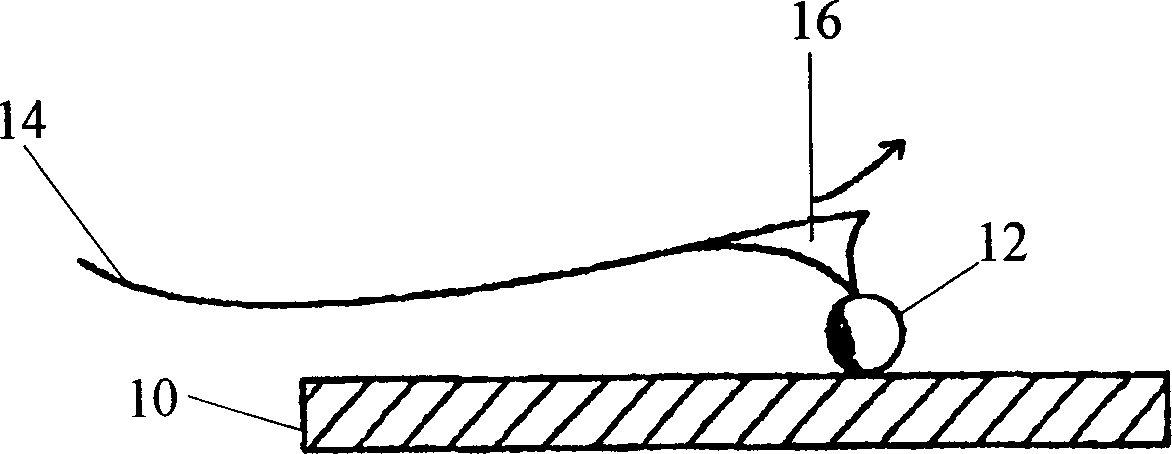Evaluating binding affinities by force stratification and force planning
A combination of force and scanning probe technology, applied in the direction of analyzing materials, measuring devices, instruments, etc.
- Summary
- Abstract
- Description
- Claims
- Application Information
AI Technical Summary
Problems solved by technology
Method used
Image
Examples
Embodiment
[0031] Example description
[0032] In the present description, the term "object" is used to include any material capable of binding to a surface and capable of being detected and / or removed by probes (eg AFM probes). The object may be an inorganic molecule, an organic molecule, a biomolecule, a protein, a phage particle, a cell, etc., all of which are research objects of interest to people. The object binds or adsorbs to the surface, and is then scanned and removed, depending on how well the object binds to the surface. Objects can also be bonded to another material deposited on the surface. Additionally, the term "binding" is not limited to covalent bonding, but may include other types of molecular bonding, including adsorption, ionic bonding, and specific and non-specific molecular interactions.
[0033] The term "relatively" will be used to describe the amount of force exerted by the probe on the object to be investigated. The term "relatively" will describe the force o...
example 1
[0067] In this embodiment, the applied vertical force is measured by monitoring the deflection of the AFM probe up to and including the point at which the object 12 is removed. It will be appreciated that the lag time between the application of increased force to the object 12 and the measurement by the probe can create an amount of force that is exerted in an object that cannot be directly measured. However, the gap can be calculated by an AFM gauge or a computer. Example 1: Molecular force panning
[0068] In this example, the present invention is used to selectively remove antibodies from antigens bound to surface 10. Then, the binding force between the antibody and the antigen is measured. This example shows how the invention can be used to measure the binding force between deposited rabbit IgG and anti-rabbit IgG.
[0069] The surface in this example consisted of a glass slide covered with a layer of sputtered gold. Rabbit IgG was bound to the gold surface through non...
example 2
[0072] In other embodiments, the antigen / antibody complexes can be bound to the surface, ensuring that the entire complex is not dislodged during scans of increasing setpoints. Example 2. Force-scanning based on avidity of selection for phage and virus interactions
[0073] Such as Figure 3a As shown in -c, force saccades can alternatively be used to selectively dislodge virus or phage particles that do not bind well to surfaces, thereby allowing the collection and identification of those particles with high surface binding. Phage display is a method well known in the art for displaying the sum of potentially desired recombinant proteins on the surface of phage particles. Phages are engineered to produce specific proteins on their surfaces. Very large combinatorial libraries of proteins can be displayed on the surface of phage and selected by several screening mechanisms. Once selected, the desired phage can be propagated, and molecules with desired properties can be purif...
PUM
| Property | Measurement | Unit |
|---|---|---|
| radius | aaaaa | aaaaa |
Abstract
Description
Claims
Application Information
 Login to View More
Login to View More - R&D
- Intellectual Property
- Life Sciences
- Materials
- Tech Scout
- Unparalleled Data Quality
- Higher Quality Content
- 60% Fewer Hallucinations
Browse by: Latest US Patents, China's latest patents, Technical Efficacy Thesaurus, Application Domain, Technology Topic, Popular Technical Reports.
© 2025 PatSnap. All rights reserved.Legal|Privacy policy|Modern Slavery Act Transparency Statement|Sitemap|About US| Contact US: help@patsnap.com



